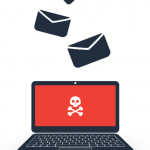European critics say there is an English-language bias to the reporting. With American journals overwhelmingly citing research reported in English, the mean journal impact of American science is 30% above the world average.2 This puts pressure on authors around the world to eschew low-IF national journals in favor of a chance to appear in high-IF English-language publications. Papers that do appear in low-IF national journals are often underrated by the scientific community and policy makers.
The ability of pharmaceutical companies and other potential advertisers to employ IF in their buying decisions ups the ante. Anecdotal reports of self-citations have editors, eager to boost their reputation, citing their own publication in editorials and suggesting that authors add citations from their journal to upcoming articles. Fortunately, according to Dr. Lockshin, Thomson Scientific sees these efforts as transparent and seeks to discount self-citations.
A&R, AC&R Make an Impact
The ACR’s influential journals A&R and Arthritis Care & Research (AC&R) achieved a 2006 IF of 7.751, up 0.33 from the 2005 score of 7.421. (When calculating IF, AC&R is considered a section of A&R, and citable articles from both journals are used to calculate a single IF.) A&R was already the top-ranked rheumatology publication indexed by Thomson Scientific before the increase. The 2006 IFs were announced in June.
“We were delighted to see that the impact factor rose,” says A&R editor Michael D. Lockshin, MD, in an e-mail. “Since the impact factor lags two years behind the publication dates, the 2007 impact factor reflects publications in 2005 and 2006,” he noted.
What will the higher IF mean for the journal? “It enhances our reputation and our attractiveness for top-flight authors,” says Dr. Lockshin, who attributes the increase to the “outstanding articles we publish, of course.”
Controversial Calculation
Another issue is the mix of articles in a publication and manner in which Thomson Scientific arrives at the final calculation. Clinical studies, clinical definitions/consensus reports, and review articles are highly desirable because they generate the most citations. A single sensational article can increase IF more than several well-regarded basic science papers, so editors can be tempted to alter their publication mix to raise their IF. Consideration as to which authors and articles will contribute the most to IF could affect the information that ultimately gets to the readership.
Letters to the editor, news articles, editorials, book reviews, and abstracts of meetings are not counted as citable articles, but can raise the IF by increasing the equation’s numerator. In June 2006, the Public Library of Science (PLoS) issued this editorial opinion: “We conclude that science is currently rated by a process that is itself unscientific, subjective, and secretive.”3



